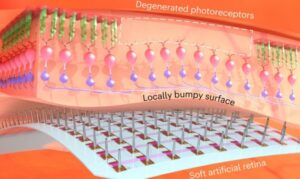Researchers in Switzerland and the US have gleaned new insights into how slab avalanches begin on snowy mountainsides, reconciling the predictions of two competing theories. Led by Johan Gaume at the École Polytechnique Fédérale de Lausanne (EPFL), the team used calculations, computer simulations and observations from real slab avalanches to show that the cracks responsible for the falling snow are formed by mechanisms similar to those found in strike-slip earthquakes. The result could make it easier to forecast when and where avalanches will form.
Avalanches can be triggered by a variety of possible mechanisms, many of which rely on specific conditions such as loose, wet, or powdery snow. In slab avalanches, mechanical failure begins within weak, highly porous layers of snow that have become buried beneath fresh, more cohesive layers.
On steep mountain slopes, the weight of this newer snow can overcome the friction between the two layers. When this happens, broad fractures form in the upper layer and propagate along the mountainside at speeds of over 150 m/s – causing slabs of cohesive snow to slide and break away.
Competing theories and mechanisms
Scientists have developed two competing theories about the nature of this release mechanism. The first suggests that the weak snow layer fails under the shear stress imparted by the upper layer. The second argues that a collapse in the porous structure of the lower layer is the main culprit.
Although small-scale experiments seem to validate the first mechanism, the cracks that appeared in these earlier studies propagated far more slowly than was the case in real slab avalanches. Based on this evidence, Gaume’s team suggest that neither mechanism bears sole responsibility: rather, the shifting snow layers undergo a transition from one mechanism to the other.
To test their theory, the researchers constructed a large-scale simulation of the two layers and modelled the propagation of cracks in the upper layer during a transition between the two mechanisms. They then compared their measured propagation speeds with those observed in video recordings of real slab avalanches.
In their most accurate simulations, the team found that cracks began to form as the porous lower layer was crushed under the weight of newer snow, as suggested by the second theory. As this happened, however, the influence of the shear force between the layers took over, initiating crack formation via the first theory’s preferred mechanism.

Ice avalanche enters the lab
These shear-induced cracks subsequently propagated along fractures already formed by the second mechanism, allowing them to travel far more quickly than if they were propagating through structurally-undamaged snow. In the team’s simulations, these propagations closely mimicked those observed in real avalanches.
Gaume and colleagues say that the insights in their study, which is published in Nature, could help to improve the accuracy of avalanche forecasting systems, enabling mountain communities and ski resorts to better evaluate the risks they pose. The mechanisms they have uncovered also have striking similarities with strike-slip earthquakes – meaning further research could provide similarly important insights for seismologists.













